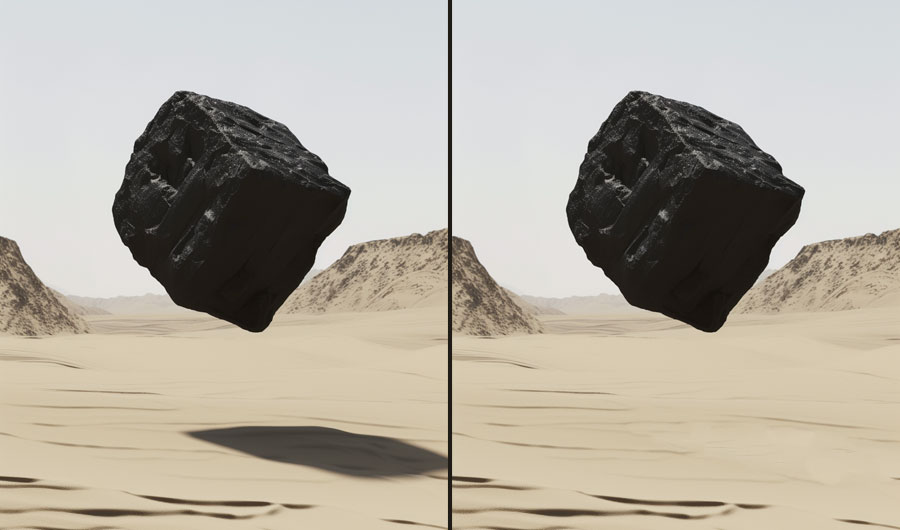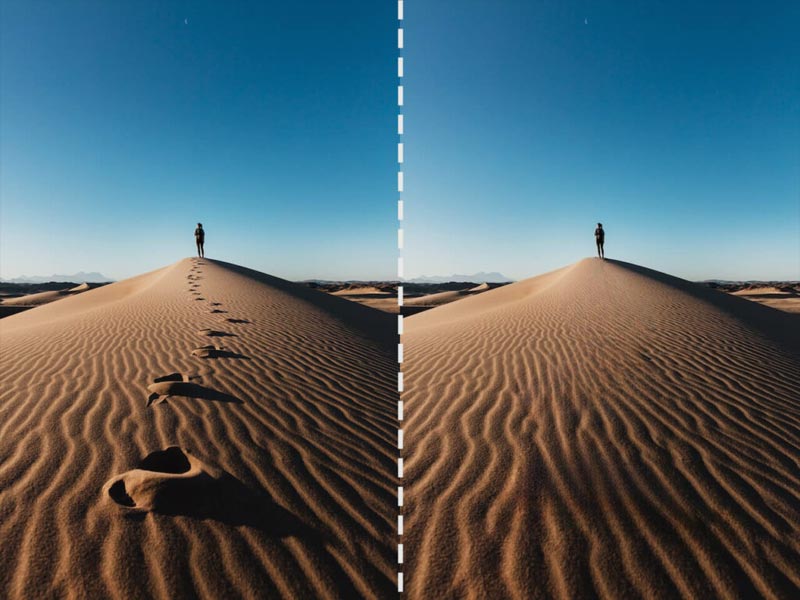
Beyond the Basics: Advanced Techniques with Content-Aware Fill
Content-Aware Fill is a pivotal feature in Photoshop that assists novices and professionals. It refines images by removing unwanted elements seamlessly. This tool utilises sophisticated algorithms to analyse the surroundings. These algorithms replicate the textures, colours, and shades in the image.
Advanced techniques enhance the tool’s effectiveness for those seeking to delve deeper. It allows for intricate editing that maintains the photographer’s natural integrity. Techniques like these are essential for those looking to remove object from picture with precision. Each adjustment ensures a seamless integration into the original scene.

Advanced Selection Techniques
The success of Content-Aware Fill largely depends on the precision of the selection. For complex images, where detail is critical, using more precise selection tools beyond the basic lasso is crucial. The Pen Tool allows for meticulous point-by-point selection, providing unparalleled control. Similarly, the Magnetic Lasso can automatically cling to defined edges, making it ideal for quickly isolating complex shapes.
Customising Sampling Areas
One advanced method to increase the effectiveness of Content-Aware Fill is to customise the sampling area. Instead of allowing Photoshop to automatically choose the sampling points, users can manually define the source area from which Photoshop pulls data to create the fill.
It is particularly useful in crowded scenes or when working near distinct patterns that the automatic selection might misinterpret. By directing Photoshop to use specific parts of an image, the fill becomes more predictable and harmonious with the original image.
Utilising Color Adaptation
Colour adaptation is a feature within Content-Aware Fill that adjusts the filled area to match better the lighting and colour gradient of the surrounding image. For images with subtle colour shifts or varying degrees of shadow, adjusting the ColorAdaptation settings can dramatically improve the blend between the original and the filled area, ensuring the modifications are virtually undetectable.
Complex Textures and Patterns
Dealing with complex textures or repeating patterns requires a nuanced approach. The ‘Mirror’ option within Content-Aware Fill is invaluable here, as it mirrors a portion of the image to fill the selected area. It is especially effective in maintaining the integrity of structured patterns or symmetrical designs, ensuring that the fill does not disrupt the visual continuity of the image.
Layering and Blending Modes
Applying Content-Aware Fill on a separate layer is recommended to refine the fill outcome. This practice offers multiple advantages: it allows for non-destructive editing, enabling the user to revert changes easily.
Furthermore, blending modes can be adjusted to integrate the fill more naturally into the rest of the image. For example, using a soft light or overlay blending mode can subtly merge the filled area, particularly when dealing with tricky lighting conditions or textures.
Integrating with Other Photoshop Tools
Content-aware fill often serves as a preliminary step in the editing process. After applying the fill, slight mismatches or imperfections can be corrected using the Healing Brush or Clone Stamp Tool. These tools allow for detailed touch-ups and help achieve a flawless finish.
Utilising these tools effectively ensures that the filled sections blend seamlessly with their surroundings, enhancing the overall composition. By refining these techniques, editors can elevate the visual quality of their projects, creating more professional and visually appealing images.
Creative Applications
Beyond practical applications like removing unwanted objects or imperfections, it can be creatively used to alter compositions or even create artistic effects. For example, photographers can use this feature to simplify backgrounds, thereby focusing more on the subject. Alternatively, it can be used to create surrealistic images by blending elements from various parts of the image or even from different photographs.
Challenges and Solutions
Despite its powerful capabilities, it can sometimes produce less-than-perfect results, especially in highly detailed or cluttered areas. In such cases, combining it with manual cloning and healing allows for better control over the final output, enhancing the refinement process.
Additionally, frequent practice on varied images can help users understand the tool’s behaviour under different conditions, improving skill over time. Understanding these nuances ensures that users can adapt their approach to each unique situation, gradually mastering the tool for consistently high-quality edits.
Advanced techniques in using Content-Aware Fill open up a myriad of possibilities for photo editing, from basic corrections to complex artistic creations. By mastering these methods, users can significantly enhance the quality and impact of their images. As technology progresses, the possibility for even more sophisticated editing solutions becomes apparent, including the ability to seamlessly remove object from picture with precision. Content-Aware Fill, when used to its full potential, is not just a tool for correction but a gateway to redefining the possibilities within digital photography.
Related:
- 22 Best Photo Collage Templates – Free & Premium
- 19+ Best Adobe Photoshop Actions for Portraits
- AI-Controlled Professional Headshot – Redefining Quality and Effectiveness






